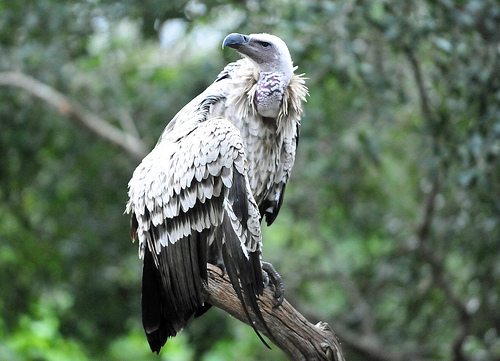Old World vultures are necessary parts of many ecosystems.
- Old World vultures are large birds native to Africa, Europe and Asia, classified by two subfamilies, Gypaetinae and Aegypiinae.
- Old World vultures are from the family Accipitridae, the family of hooked-beak birds, while New World vultures belong to a different family.
- The diet of Old World vultures consists primarily of meat that they extract from the bodies of dead animals and people.
- The heads of many of the Old World vultures are generally featherless, which is said to help prevent overheating.
- Livestock may be treated with chemicals, that can render meat for Old World vultures poisonous, and has caused the destruction of many populations of the birds, although the birds are generally not affected by animal diseases and bacteria.
Old World Vulture
Image courtesy of Heather Paul/Flickr
- Old World vultures range from 60 to 150 centimetres (2 to 5 feet) in height, generally weigh between 0.85 to 2.2 kilograms (2 to 5 pounds), and typically have a wingspan that spreads 130 to 183 centimetres (51 to 72 inches) wide.
- Old World vultures have feathers that are typically coloured black, brown, white, grey or tan, or a combination of these colours.
- Old World vultures have superb eyesight, and they can turn red in the head when they are not happy about something.
- Snakes, hawks and wild cats prey on Old World vultures, and the birds commonly play dead when they feel vulnerable.
- People from Old World vulture’s native countries benefit from the bird, as they clean up rotting carcasses, that would otherwise spread disease and cause other health problems.
Bibliography:
Old World Vultures, 2015, Wikipedia, http://en.wikipedia.org/wiki/Old_World_vulture
Vulture, 2013, A-Z Animals, http://a-z-animals.com/animals/vulture/
Vulture, 2015, San Diego Zoo, http://animals.sandiegozoo.org/animals/vulture







